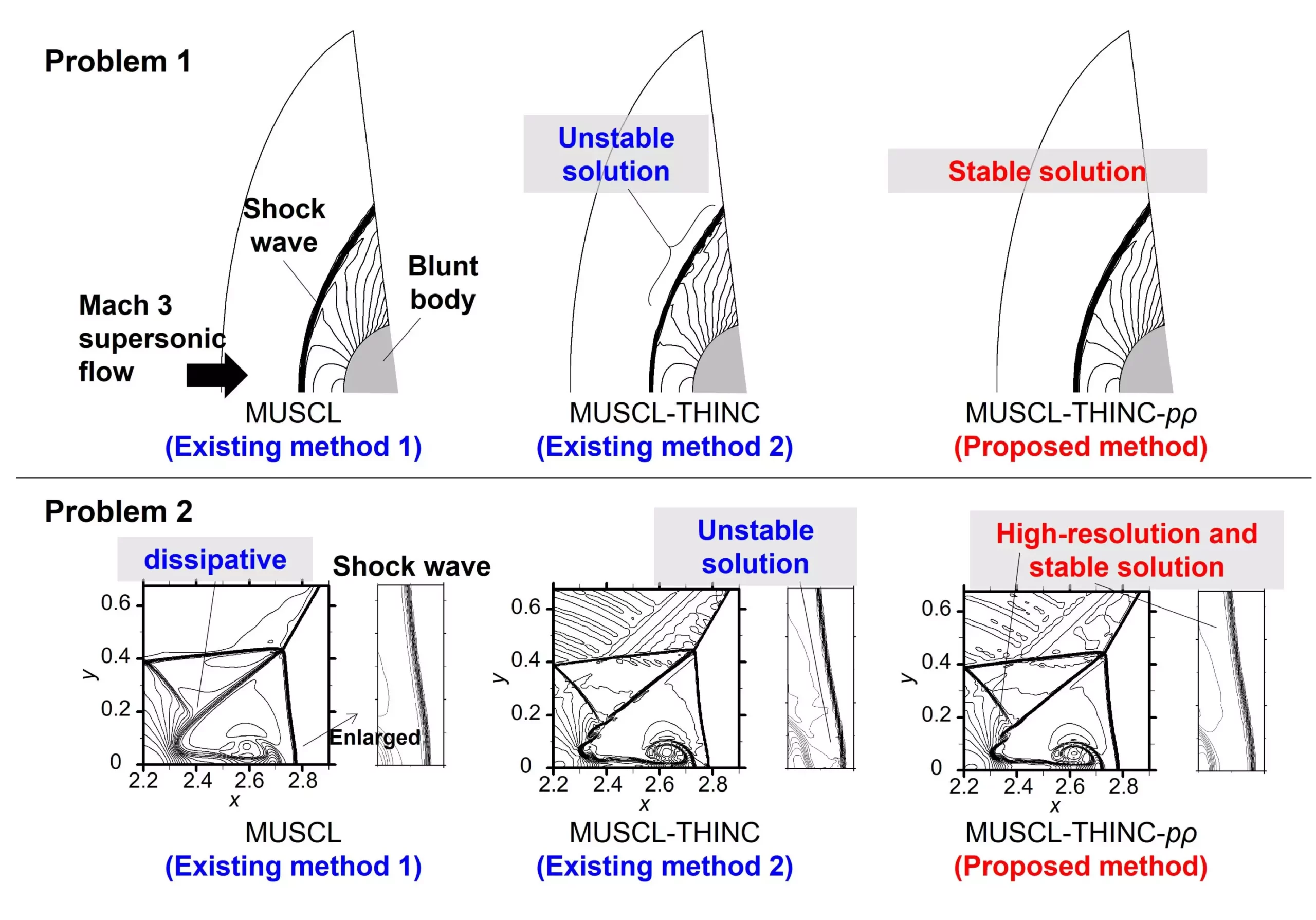In a world where precise simulation of fluid dynamics is increasingly becoming paramount for engineering advancements, a groundbreaking team of scientists from Yokohama National University has unveiled a hybrid method that promises to elevate the standards of compressible flow simulations. Their research, published in *Physics of Fluids* on April 10, 2024, introduces the T-MUSCL method, a pioneering approach that successfully balances efficiency and accuracy. This advancement has profound implications, especially in fields like aerospace and mechanical engineering, where understanding the complexities of gas dynamics is critical.
The Essence of MUSCL and Its Limitations
The classical approach to solving fluid dynamics problems often relies on finite volume methods, with the Monotonic Upstream-Centered Schemes for Conservation Laws (MUSCL) being a prominent example. While this method has its strengths—particularly in handling shock waves and discontinuities—it struggles with the accurate resolution of complex flows, often yielding dissipative results that hinder the fidelity of simulations. Such limitations have not only frustrated researchers but have also underscored the demand for more refined solutions that can withstand the rigors of real-world applications.
Keiichi Kitamura, an associate professor at the Faculty of Engineering, emphasizes this gap: “Recent advancements in numerical methods have not bridged the divide between academic complexity and engineering applicability.” His insights highlight a persistent challenge in fluid dynamics that calls for innovative thinking and fresh methodologies.
The Birth of T-MUSCL
Addressing these challenges, the research team—the vanguard of this revolutionary idea—has seamlessly integrated the traditional MUSCL with the Tangential Hyperbolic Interface Capturing (THINC) method to devise the T-MUSCL scheme. This hybrid solution emphasizes a remarkable adaptability to varying degrees of nonlinearity and discontinuity. By introducing a nonlinearity-weighted parameter and a slope-ratio-weighted parameter into the process, T-MUSCL strikes a crucial balance, enabling it to handle both weak and strong shock waves with precision.
This new method presents multiple advantages, notably in its enhanced accuracy for continuous flow simulations. Researchers have observed that T-MUSCL can effectively capture even the most subtle movements of shock waves, resolving issues that have vexed conventional methods for too long. The research innovations embodied in T-MUSCL are not just technical footnotes; they represent a significant leap in our ability to replicate and predict natural phenomena with reliable fidelity.
Practical Implications for Engineering Challenges
The clear appeal of T-MUSCL lies in its ease of implementation across existing algorithms. In an era where complexity often stifles innovation, this scheme introduces a welcome simplicity that allows engineers and researchers to adopt cutting-edge technology without overhauling their entire systems. This thoughtful consideration of practicality speaks volumes about the researchers’ intent to bridge the persistent gap between academic research and applied engineering.
As Gaku Fukushima, another key researcher, articulates, this advancement is more than just an academic exercise; it represents a transformative step toward enhancing our grasp of compressible flow dynamics. The potential applications across various industries, including aerospace and mechanical engineering, signal a promising horizon for this novel method. It allows engineers to simulate increasingly complex scenarios that mirror real-life conditions, where precision is not just an advantage but a necessity.
A Vision for the Future of Compressible Flow Research
Looking ahead, the team’s ambitions extend beyond mere simulations. With a desire to apply their method to actual engineering problems, they aspire to catalyze progress across multiple sectors. By deepening the understanding of compressible flow dynamics and shock waves, T-MUSCL stands poised to expedite advancements that could redefine engineering practices in years to come.
The heart of the research, as expressed by Kitamura, is the aspiration for accessibility. He states, “Our method is constructed within the so-called second-order scheme, which is the most popular type of numerical method. We believe that our method is accessible to a lot of users because of this feature.” This commitment to usability reflects an understanding that the future of engineering research is not just in developing sophisticated algorithms, but ensuring that these tools are engageable by a wider community.
With T-MUSCL, the scientists at Yokohama National University are not merely continuing the ongoing evolution of fluid dynamics research; they are shaping it into a more robust, accurate, and accessible form. As we stand on the cusp of this exciting frontier, one thing is clear: the future of compressible flow simulations is brighter than ever.


Leave a Reply